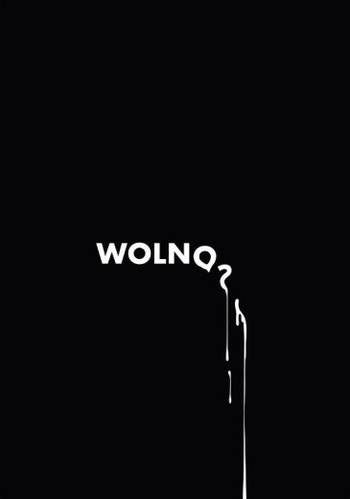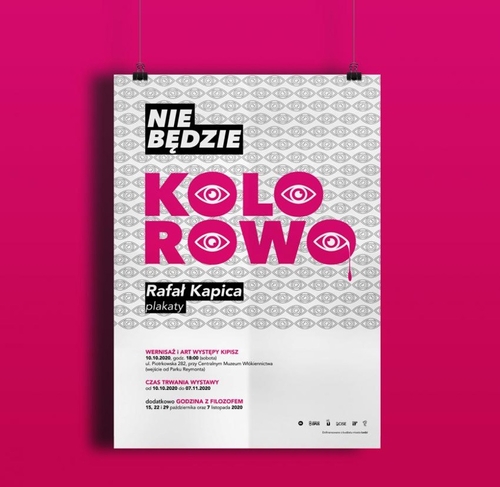
© Rafał Kapica
written by Jędrzej Janicki (08.10.2020)
translated by Jędrzej Janicki (08.10.2020)
It must be honestly admitted that in the heyday of the Polish School of Poster Art, a socially engaged poster – for obvious reasons – did not enjoy success. Recently, however, we have observed an increasing importance of this type of artistic activity. Younger generation artists creating such posters are undoubtedly indebted to the masterful works of Lex Drewiński. However, there are still personalities creating very distinct works that are hard to pass indifferently. Rafał Kapica, whose poster Freedom may be the most important work at the exhibition of his original posters entitled It Won’t Be Colourful, is one of such artists.
In terms of composition, this poster could serve as a model of a minimalist approach. On a black monochromatic matte background there are clearly outlined white letters arranged into the word “wolno” (“it is permitted”). The design of the letters surprises with its simplicity and clarity – these features are, moreover, the common denominator of the works presented by Kapica at the above-mentioned exhibition. The word “wolno” is immediately followed by two more characters, resembling the heavily distorted letters “ś” and “ć”. Actually, the recipient guesses that the word “wolność” (“freedom”) appears on the poster on the basis of the institutional context of setting of this work – after all, it got to the finals of the competition 30 Years of Freedom on Polish Artists’ Posters1. Kapica’s depiction gives a clear signal that the situation of our freedom is not so obvious and simple. Apparently everything is permitted, but not so completely. After all, we do not have full “wolność” (“freedom”), presented here, but only “wolno” (“it is permitted”). Here is a simple, elegant play on words that can be read as a precise commentary on the reality around us. The poster Freedom also shows one of the means of expression used very often by this author. The flowing paint is presented in a convincing way, reminiscent of the hastily created works of graffiti artists.
The artist uses this type of artistic convention in several of his other works, for example, in the poster Clerical Collar or the poster promoting the exhibition It Won’t be Colourful.

It seems to me that the style of Kapica’s works was shaped by at least a few factors (see more on this topic in the introduction to the catalogue of the exhibition It Won’t Be Colourful, published by Urban Forms Foundation, Łódź 2020). One can emphasise his experiences with painting, which are perhaps a bit less visible, but still legible in his posters2. Besides, the artist draws a lot from the rigours of (post) avant-garde graphic design, ich constitutes an outstanding part of his oeuvre. What is equally important, he is also a keen observer of reality and is absolutely not afraid to speak up on social issues, these most important and current ones – as evidenced by his other works, such as Clerical Collar or LGBT Funeral Flag. He does it in a reflective, digressive and narrative way. Freedom poster is also one of the examples of such “artistic comments”.
1 Final posters are available here: https://www.polityka.pl/tygodnikpolityka/kultura/1795052,1,30-lat-wolnosci-na-plakatach-mlodych-polskich-artystow.read.
2 Paintings by Kapica you can find here: https://desa.pl/en/artists/rafal-kapica/.
